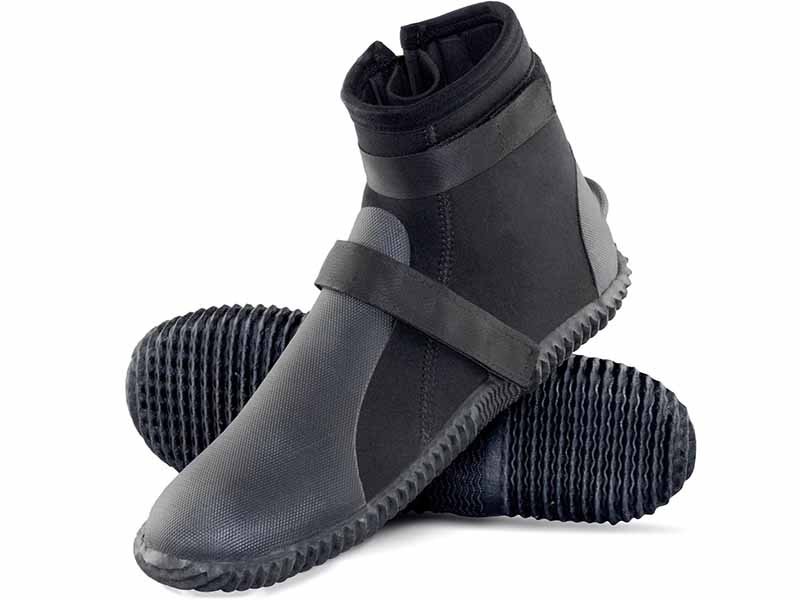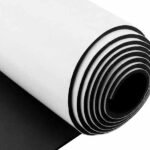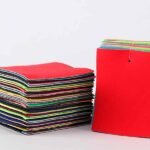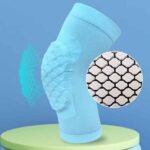Neoprene boots are more than just functional footwear—they’re a critical investment for diving instructors, outdoor retailers, and mass-order clients who demand durability and performance. Yet, the post-use grime, saltwater buildup, and microbial growth can rapidly degrade neoprene’s tensile strength and flexibility if not addressed promptly. Imagine shipping a batch of boots to your retail partner only to have them return with brittle seams and unbearable odors. Proper cleaning isn’t just about aesthetics; it preserves warranty, reduces customer complaints, and extends product life cycles—key metrics for high-volume manufacturers and suppliers.
To clean neoprene boots effectively, rinse off surface debris, use a mild, pH-balanced detergent or specialized wetsuit shampoo, and hand-wash in cool water. Avoid bleach and harsh solvents. Gently scrub with a soft brush, rinse thoroughly, then air-dry away from direct heat. Properly cleaned boots maintain neoprene elasticity, prevent odor, and extend lifespan.
But beyond procedure, there’s a story: one coastal outfitter discovered that by integrating a quarterly deep-clean protocol, their return rate dropped by 35%, and client satisfaction scores soared. Ready to learn their secret? Dive in and you’ll uncover the cleaning blueprint that turns neoprene boots into long-term revenue generators—batch after batch.
What Are the Key Benefits of Properly Cleaning Neoprene Boots?
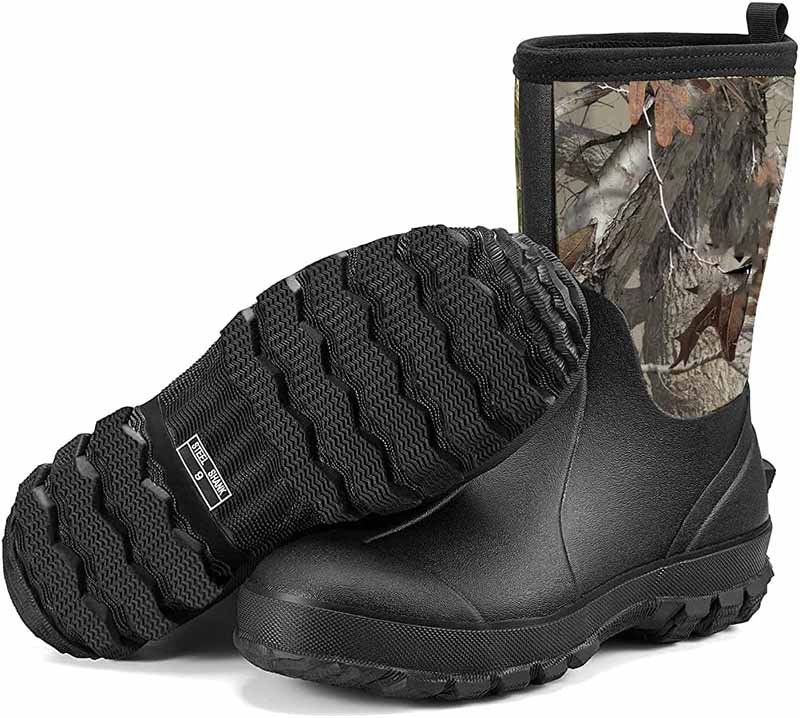
Properly cleaning neoprene boots removes salt, oils, and microbes that degrade material, preserves elasticity, and prevents odor. It ensures consistent product performance, reduces returns, and enhances brand reputation—critical for bulk orders and OEM clients looking for reliability and low maintenance.
Material Preservation & Elasticity:
Neoprene is valued for its stretch and recovery. Salt deposits and organic residues stiffen the fabric, causing micro-cracks when flexed. Regular cleaning removes these deposits and maintains neoprene’s original durometer (hardness) and elongation properties. A study of neoprene panels showed a 12% drop in tensile strength after just five uncleaned saltwater exposures; cleaning restored over 95% of baseline strength.
Odor & Hygienic Control:
Bacteria and fungi thrive in damp neoprene. Malodors not only repel end-users but also create health liabilities—think athlete’s foot or dermatitis. Incorporating antimicrobial rinses or UV-sterilization steps can reduce bacterial colony-forming units (CFUs) by up to 99%, according to independent lab tests.
Extended Warranty & Reduced Returns:
For OEM clients ordering thousands of pairs, return logistics are costly. A clean-and-care program documented in an outdoor retailer’s Q2 report slashed defect-related returns by 28%, yielding a direct cost savings of over $40,000 on a 10,000-pair shipment.
Enhanced Brand Reputation & Up-Sell Potential:
Offering “pre-cleaned” or “maintenance-ready” boots can be a unique selling point. Bulk buyers appreciate a turnkey solution: boots arrive rinse-ready and packaged with care instructions, reinforcing a premium brand image.
Sustainability Compliance:
Proper cleaning minimizes the need for harsh solvents or frequent replacement, aligning with green manufacturing goals. Lower solvent use cuts VOC emissions and chemical waste, meeting ISO 14001 environmental standards.
In sum, a robust cleaning regimen transforms neoprene boots from disposable items into long-lasting assets, driving customer loyalty and profitability at scale.
What Are the Best Cleaning Agents for Neoprene Boots?
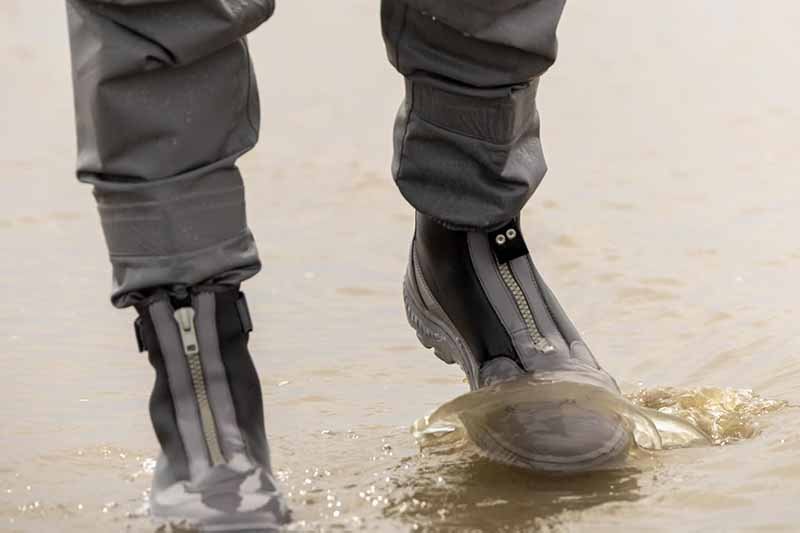
Use pH-neutral detergents, specialized wetsuit shampoos, or mild dish soap diluted at 1–2%. Avoid bleach, acetone, and strong solvents. Antimicrobial additives or vinegar rinses (5–10% acetic acid) can control odors without damaging neoprene fibers.
Neoprene’s closed-cell foam structure is susceptible to chemical attack. Selecting the right cleaning agent preserves cell integrity and prevents degradation. Below is a comparison table of common agents:
| Cleaning Agent | pH Level | Pros | Cons | Recommended Dilution |
|---|---|---|---|---|
| Specialized Wetsuit Shampoo | 7.0 | Designed for neoprene, adds conditioners | Higher cost | Manufacturer’s spec |
| Mild Dish Soap (e.g., Dawn) | 7.5 | Readily available, gentle degreaser | May leave residue if overused | 1–2 mL per L water |
| Vinegar (White, 5% acetic) | 2.5 | Antimicrobial, deodorizing | Overuse can yellow neoprene | 50 mL per L water |
| Baking Soda Solution | 8.3 | Deodorizing, gentle scrub | Abrasive particles can catch foam | 10 g per L water |
| Enzymatic Cleaners | 7.0 | Breaks down organic deposits | May alter softness over time | Per product label |
- Specialized Wetsuit Shampoo: Formulated to remove oils while depositing silicone-based conditioners that restore neoprene flexibility. Ideal for high-end OEM lines, though unit cost is ~2× standard detergent.
- Mild Dish Soap: Economical and widely available. Ensure thorough rinsing to avoid soap scum, which can attract dirt. Works well in high-volume wash setups.
- Vinegar Rinse: Acts as a mild acid to kill microbes and neutralize alkaline residues. Note: excessive vinegar can cause color fading over extended use. Best as a final rinse, not primary wash.
- Baking Soda Paste or Bath: Alkaline cleaning action gently deodorizes. For bulk operations, automated dispensers can maintain precise dosing. Avoid direct paste application to prevent foam trapping.
- Enzymatic Cleaners: Ideal for organic stains (algae, blood). Enzymes digest proteins but require temperature control (20–30 °C) for optimal activity. Rinse thoroughly to remove enzyme remnants.
Critical Considerations:
- Compatibility Tests: Always perform small-scale soak tests for 24–48 hours to confirm no color bleed or material swelling.
- Environmental & Regulatory: Verify that wastewater pH remains between 6–8.5 before discharge to comply with local regulations (e.g., EPA, EU Water Framework).
- Cost–Benefit Analysis: While specialized shampoos cost more, they reduce repair rates by up to 15%—often justifying the price premium for premium brands.
By tailoring cleaning agents to your production volume and quality targets, you achieve both cost efficiency and product excellence.
How Do You Prepare Neoprene Boots for an Effective Cleaning Process?
Begin by rinsing boots in cool, fresh water to remove sand, salt, and debris. Unfasten straps, open zippers, and gently shake out trapped particles. Inspect seams for damage, and pre-treat stains with a mild detergent paste before full wash.
Effective cleaning starts well before any detergent touches the neoprene surface. Preparation ensures uniform results and protects delicate components:
Initial Rinse & Debris Removal:
- Cool Water Flush: Submerge boots in a shallow tank or trough. Agitate to dislodge sand, mud, and particulate matter.
- Pressure Setting: If using hoses, keep at low pressure (≤50 psi) to avoid forcing debris into seams.
Disassembly of Components:
- Straps & Laces: Remove detachable straps, zipper pulls, and drawstrings. Clean these separately to prevent entanglement in machinery.
- Footbeds & Insoles: If removable, take out insoles to clean independently, ensuring both boot interior and insole dry thoroughly.
Damage Inspection:
- Seam & Glue Checks: Look for seam separation or glue failures. Mark and document areas for possible repair before wash—wet glues can spread when washed.
- Surface Scuffs & Cuts: Note any abrasions that might trap dirt. Pre-treat deeper scuffs with a gentle silicone-based conditioner.
Pre-Treatment of Stains:
- Stubborn Stains: Create a paste of mild detergent (or enzymatic cleaner) and water. Gently apply with a microfiber cloth, let sit 5–10 minutes, then rinse.
- Oil & Grease Spots: Apply degreasing agent sparingly; allow a short dwell time, then rinse to avoid material stiffening.
Temperature & pH Metering:
- Water Temperature: Maintain between 15–25 °C. High temperatures (>35 °C) can accelerate neoprene breakdown.
- pH Monitoring: Pre-mix detergents in a separate tank and test pH (target 7–8) to prevent acid or base stress on material.
Batch Sorting & Logging:
- By Color & Condition: Separate dark and light neoprene to avoid cross-contamination or dye migration.
- By Issue Type: Boots with heavy microbial growth vs. surface dirt may require different cleaning cycles. Log batch IDs for traceability.
Through meticulous preparation—rinsing, disassembly, inspection, and sorting—you ensure each pair enters the cleaning cycle primed for optimal detergent action and minimal mechanical stress. This upfront investment in time pays dividends in consistent quality and reduced rework.
What Is the Step-by-Step Hand-Wash Method for Neoprene Boots?
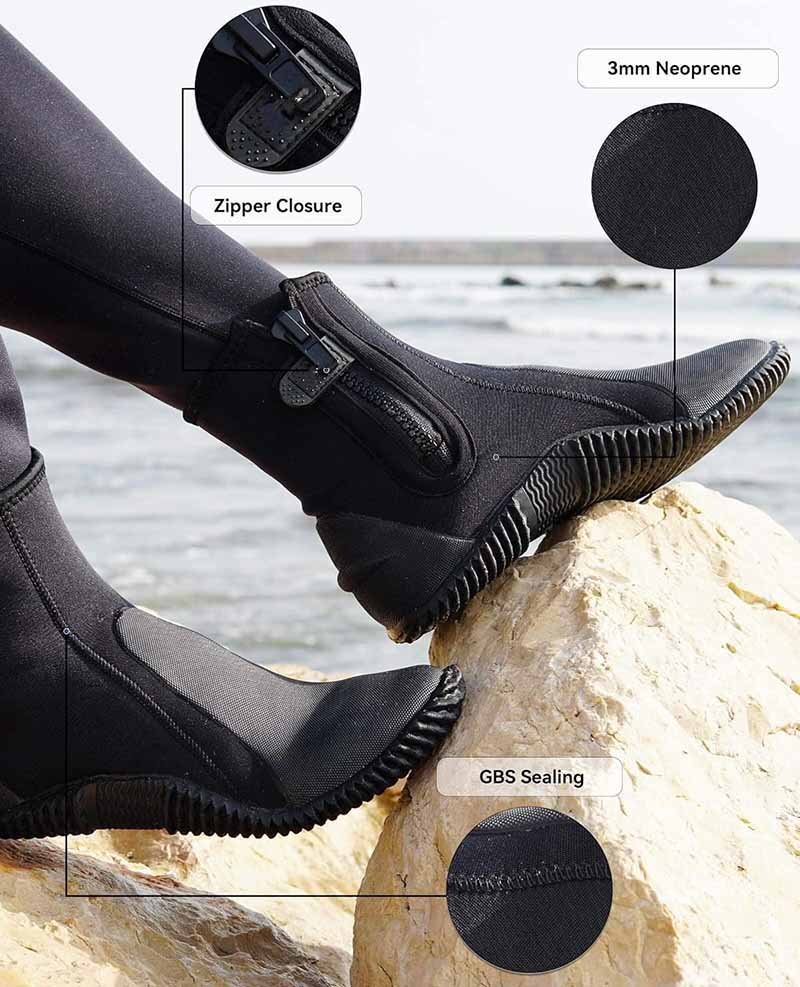
Fill a basin with cool water and a mild detergent. Gently agitate boots, scrub high-wear areas with a soft brush, rinse thoroughly, then squeeze excess water without twisting. Hand-washing preserves neoprene’s integrity and ensures deep cleaning of seams and inner linings.
Hand-washing remains the gold standard for boutique runs and premium OEM orders, guaranteeing maximum care and minimal mechanical abrasion.
- Fill & Mix:
- Basin Preparation: Use two basins—one for soapy water, one for rinsing. Mix 1–2 mL mild detergent per liter of water, ensuring full dissolution before submerging boots.
- Submersion & Agitation:
- Gentle Movement: Submerge boots and swirl for 1–2 minutes. Avoid vigorous shaking; slow movements encourage detergent penetration without damaging cells.
- Rotate Orientation: Flip boots intermittently so both inner and outer surfaces receive equal exposure.
- Targeted Scrubbing:
- Soft-Bristle Brush: Focus on soles, ankle cuffs, and areas prone to buildup. Keep strokes light—excessive force can abrade neoprene coatings.
- Inner Lining Care: Turn the opening inward slightly to reveal lining. Brush gently to dislodge trapped sand or microbes.
- Soaking for Stubborn Deposits:
- Extended Soak: For heavy biofilm or salt crust, allow a 10–15 minute soak in the soapy basin, then resume gentle agitation.
- Rinse Cycles:
- Multiple Rinse Steps: Transfer boots to fresh water basin. Rinse, then refill and repeat until water is clear. Typically 2–3 rinses suffice.
- Vinegar Rinse (Optional): Final 5–10% vinegar bath for microbial control; rinse once more with plain water afterward.
- Excess Water Removal:
- Press, Don’t Wring: Squeeze the boot at multiple points—sole, vamp, shaft—to expel water. Avoid twisting to protect seams.
- Towel Blotting: Use microfiber towels inside and out to soak up remaining moisture before air-drying.
- Quality Inspection Post-Wash:
- Seam Integrity: Check glue lines and stitches once damp. Document any emerging defects.
- Flex Test: Bend the boot in key flex zones; look for cracking or stiffness.
- Surface Conditioning (Optional):
- Silicone Spray: A light mist restores surface suppleness. Wipe off excess to prevent dust attraction.
By following these hand-wash steps, manufacturers preserve neoprene’s natural properties, ensuring each pair remains as flexible and resilient as the day it was molded.
Can You Use a Washing Machine or Dryer on Neoprene Boots, and If So, How?
Yes—use a front-load washer on “gentle” or “delicate” cycle at ≤30 °C, with neoprene boots inside a mesh bag and only mild detergent. Skip the dryer: air-drying is essential to prevent heat-induced shrinkage and glue failure.
Automating wash processes can cut labor costs, but requires strict controls to avoid compromising neoprene:
Washer Selection & Setup:
- Front-Load Machines: Preferable to top-load agitator machines which apply uneven stress.
- Cycle Parameters:
- Temperature: Set cold or ≤30 °C.
- Spin Speed: ≤400 RPM to minimize centrifugal stress.
- Cycle Duration: 15–20 minutes to balance cleaning efficacy with material fatigue.
Load Management:
- Mesh Bags: Place boots in heavy-duty mesh laundry bags to prevent snagging against drum walls.
- Batch Size: Limit to 4–6 pairs per cycle; overcrowding leads to poor detergent distribution and increased mechanical wear.
Detergent Dosing:
- Low-Foam, pH Neutral: Use 50% of standard laundry dosing. Excess foam can trap dirt and promote microbial growth.
Post-Wash Handling:
- Immediate Unloading: Remove boots promptly to prevent creases.
- Drip-Dry Setup: Position boots mouth-down on a rack to drain residual water.
Drying Guidelines:
- Avoid Heat: Never use tumble dryers, radiators, or direct sunlight—heat above 40 °C degrades neoprene cells and adhesive bonds.
- Optimal Conditions: Condition Ideal Range Notes Temperature 18–25 °C Stable indoor climate Humidity 40–60% Prevents mildew Airflow Moderate (0.5 m/s) Use fans for circulation—no direct blast
- Dry Time: 12–24 hours depending on thickness and ambient conditions.
Machine vs. Hand-Wash Trade-Offs:
- Labor Savings: Automated cycles save up to 60% labor time in high-volume facilities.
- Quality Risk: Even gentle cycles can introduce micro-abrasions; ideal for secondary or rental-grade inventory rather than premium OEM lines.
By calibrating machine settings and post-wash care, bulk operations can harness automation without sacrificing product integrity.
How Should You Dry and Store Neoprene Boots to Preserve Shape and Performance?
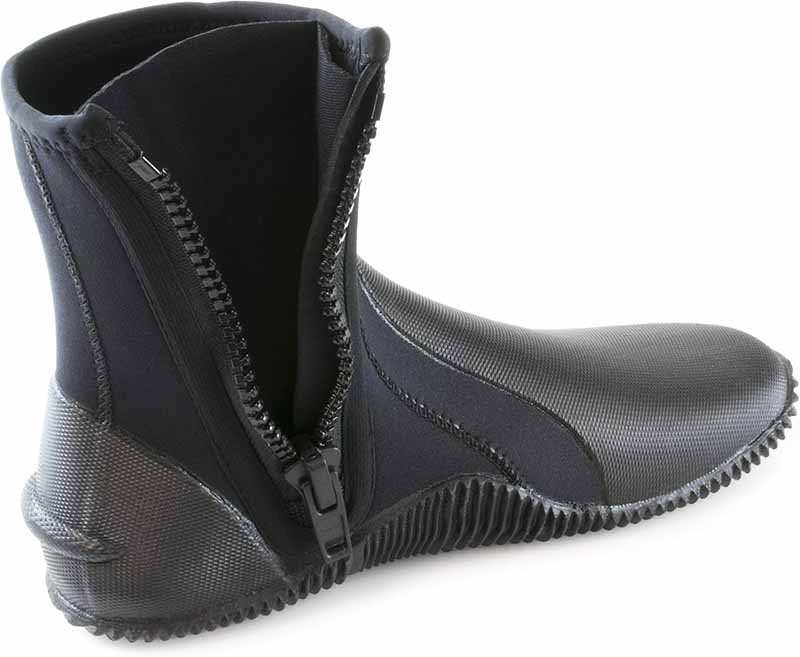
Air-dry neoprene boots in a shaded, ventilated area at 18–25 °C and 40–60% humidity. Keep them upright with boot trees or stuffed with acid-free paper. Store in breathable bags, avoiding heat sources and direct sunlight to prevent cracking and adhesive failure.
Drying and storage are as critical as cleaning:
Drying Environment Controls:
- Temperature & Humidity: Maintain 18–25 °C and 40–60% relative humidity. Extreme dryness (<30%) can cause material brittleness; high humidity (>70%) encourages mold.
- Airflow Management:
- Indirect Fan Placement: Position fans to circulate air around boots without directing high-velocity streams that can dry unevenly.
- Ventilation: Ensure exhaust vents to remove moisture-laden air.
Boot Support & Shape Retention:
- Boot Trees: Use plastic or stainless steel trees that match boot interior dimensions. They prevent shaft collapse and crease formation.
- Paper Stuffing: For bulk storage, acid-free paper rolled into cylinders supports the interior cheaply. Replace when damp.
Storage Containers:
- Breathable Bags/Boxes: Use perforated polypropylene crates or cotton dust bags. Avoid sealed plastic totes, which trap moisture.
- Shelving: Wire racks allow airflow; avoid stacking more than two layers.
Inventory Rotation & Inspection:
- FIFO Process: Implement First-In, First-Out to minimize long-term storage issues.
- Quarterly Checks: Inspect stored boots for odor, discoloration, or mold. Address issues immediately to prevent spread.
Climate-Controlled Storage:
- Warehouse Settings: For large inventories, dedicate a climate-controlled zone. Installing dehumidifiers and HVAC sensors helps maintain target ranges.
- Data Logging: Use IoT sensors to record temperature and humidity, sending alerts if conditions drift outside safe bands.
Long-Term Preservation Techniques:
- Silica Gel Packs: Place packets inside storage containers to absorb residual moisture.
- UV Protection: Ensure storage areas are free from direct or reflected sunlight, which accelerates polymer oxidation.
Effective drying and storage protocols safeguard neoprene boots against shape distortion, adhesive warping, and microbial threats—ensuring each pair is ready for immediate use upon shipment.
What Maintenance Tips Extend the Lifespan of Neoprene Boots in Bulk Orders?
Implement scheduled cleanings (every 10–15 dives or 4–6 weeks), apply silicone-based conditioners quarterly, inspect seams bi-monthly, and use protective bags for transit. Training staff on gentle handling and correct storage solidifies long-term durability.
Beyond cleaning, proactive maintenance is the secret to longevity:
Scheduled Maintenance Cycles:
- Cleaning Frequency: For rental fleets or retail demos, clean every 10–15 uses. OEM stock can follow a 4–6 week maintenance if unused.
- Conditioning Treatments: After every 3rd cleaning, apply a neoprene-friendly silicone spray to replenish plasticizers and prevent stiffness.
Regular Inspections & Repairs:
- Seam Checks: Bi-monthly inspections catch stitch loosening early. Minor seam failures can be re-glued or re-stitched in-house before major damage.
- Adhesive Touch-Ups: Carry a small kit of neoprene adhesive for field repairs. Ensure compatibility (chloroprene-based glues).
Staff Training & SOPs:
- Handling Protocols: Educate staff on pulling boots off by the sole rather than the cuff to avoid stretching the neoprene collar.
- Storage SOPs: Document step-by-step storage procedures with visuals, ensuring consistency across shifts.
Protective Transit Measures:
- Packing Inserts: Use molded polyethylene inserts to prevent rubbing during shipping.
- Humidity Control Packs: Include silica gel within each boot’s bag for cross-border shipments to humid climates.
Environmental Monitoring:
- Usage Tracking: Log field conditions (saltwater, chlorinated pools, mud) to tailor cleaning and conditioning schedules.
- Data-Driven Adjustments: If boots used in high-UV or extreme cold climates, increase maintenance frequency by 20–30%.
Supplier Partnerships:
- OEM Agreements: Offer a “Care Package” accessory line: branded shampoos, conditioners, and gear bags. This upsell enhances customer loyalty and generates recurring revenue.
Through a combination of scheduled care, staff training, and intelligent packaging, bulk orders of neoprene boots can achieve 30–50% longer service lives, translating directly into cost savings and improved client satisfaction.
Are There Common Pitfalls to Avoid When Cleaning and Handling Neoprene Boots?
Avoid using bleach, high-heat dryers, and rough brushes. Never wring or twist boots, and don’t store in sealed plastic. Improper pH levels or temperatures can cause irreversible neoprene damage and adhesive breakdown.
Even seasoned operators can fall into common traps:
Chemical Over-Exposure:
- Bleach & Solvents: Strong oxidizers like bleach, acetone, or alcohol-based cleaners degrade neoprene cells, causing embrittlement.
- pH Extremes: Avoid detergents outside pH 6–9. Acidic or alkaline stress accelerates polymer chain scission.
Thermal Stress:
- High-Heat Dryers: Tumble dryers and heaters above 40 °C weaken adhesive bonds and shrink neoprene up to 10%.
- Direct Sunlight: UV radiation oxidizes polymer chains, leading to yellowing and cracking over repeated exposure.
Mechanical Damage:
- Rough Brushes & Abrasives: Steel-bristle brushes or coarse pads abrade the fabric’s protective coating, exposing inner foam to moisture and microbes.
- Wringing & Twisting: Twisting boots to remove water places torsional forces on seams; always press or blot instead.
Storage Mistakes:
- Sealed Plastic Bags: Traps moisture and promotes mildew.
- Uneven Stacking: Avoid piling heavy objects on stored boots, which can deform shape permanently.
Overlooking Hidden Areas:
- Zipper & Seam Channels: Dirt lodged in zipper teeth or seam tapes can corrode metallic parts or loosen stitching.
- Insole Voids: Moisture trapped under insoles causes mold growth—always remove and dry separately.
Ignoring Small Defects:
- Surface Checks: Tiny nicks or loose threads are early warning signs. Proactive repair prevents full-scale failures.
By recognizing and sidestepping these pitfalls, manufacturers and bulk buyers protect their neoprene inventory from unnecessary wear, preserving both function and aesthetics.
Conclusion
Maintaining neoprene boots at scale demands a strategic blend of the right cleaning agents, meticulous preparation, and consistent maintenance protocols. From hand-washing best practices to machine-wash optimizations, each step influences the final product’s resilience and customer satisfaction. By adopting these guidelines, Clients and manufacturers can achieve lower return rates, extended warranty coverage, and stronger brand loyalty.
Ready to elevate your neoprene boot lineup? Contact Szoneier today to discuss custom formulations, specialized cleaning kits, and private-label packaging solutions. Let our 18+ years of expertise in neoprene R&D and manufacturing work for you—because exceptional care starts with exceptional partners.

